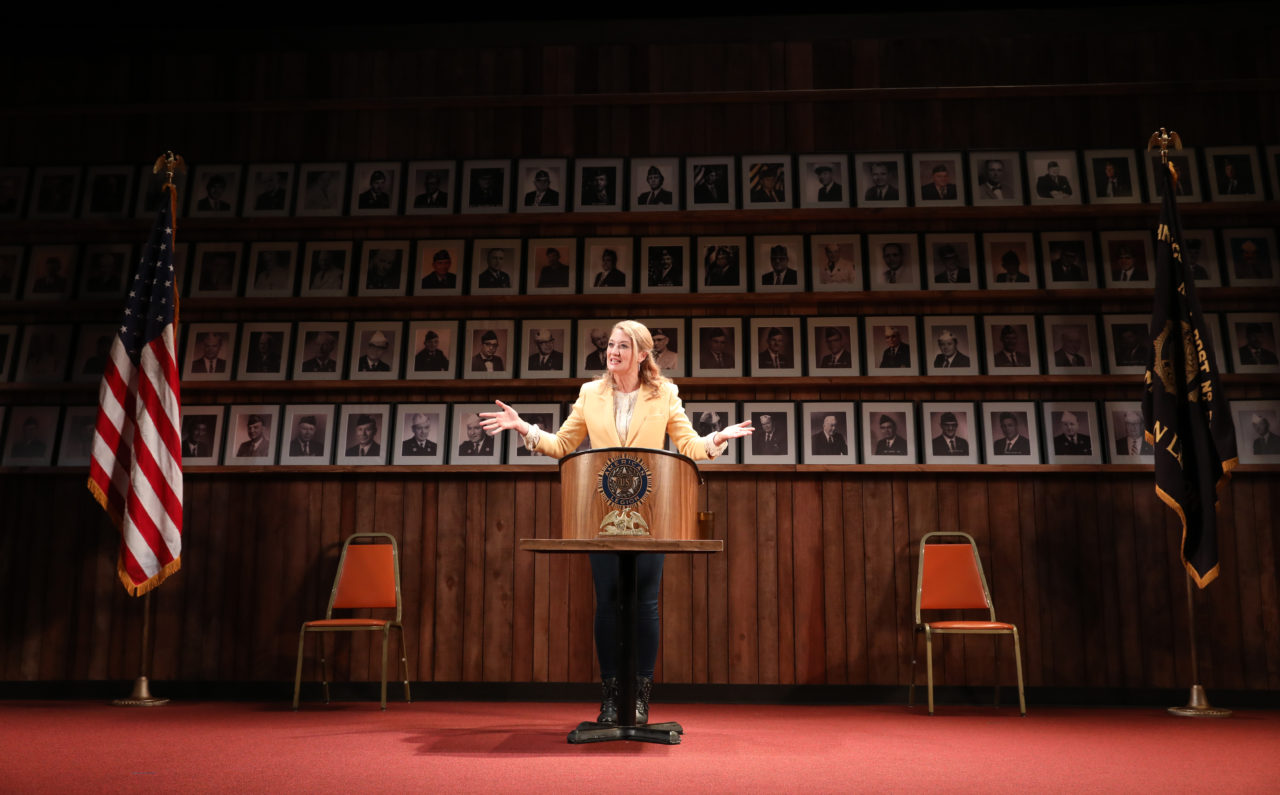Allowing for Context: A Constitution in Dialogue with the Present
Photo by: Joan Marcus
Last Sunday evening at New York Theater Workshop, Heidi Schreck, playwright of What the Constitution Means to Me, walked on stage and the house lights dimmed imperceptibly. The confirmation hearing of, now, Justice Kavanaugh to the Supreme Court had taken place only one day prior. But Schreck doesn’t make us forget the outside; in fact, she keeps that door open and thanks us for being there during this time. This play only grows when the context of our reality bleeds into the room, it feeds on the here and now, unflinching from one of the more dire truths we find ourselves facing: the US Constitution is in need of attention and we must decide if we are to stand by it, or to cast it aside.
I had seen a version of this play last year as part of Clubbed Thumb’s Summerworks Festival, and I say version not because the script itself has changed (much or at all) but rather because our quickly warming planet has taken another turn around the Sun. The set design, by Rachel Hauck, brings this heightened state of democratic anxiety to the bigger NYTW stage. The walls of the diorama-style boxy room of distantly remembered American Legion halls sit a few feet from the walls of the theatre, a small nod to the ever beating drum to remember the context in which something is written or performed. The walls are filled with looming portraits of white male members of the American Legion; in this larger space they look down on the modest lectern, and on us. The attention to detail in every aspect of this production makes sure that we know exactly what we are there to witness. The lighting design, by Jen Schriever, is tidy and effective transporting Schreck backwards and forwards in time, and for a short while allowing us to sit in the penumbra of the evening.
Throughout the performance we were gently reminded of the journey of this play’s development, a play that’s acknowledging its narrative structure and its relationship with the audience, as we are invited to participate. Initially, this seems a passive kind of participation; we assume the role of the white heterosexual male gaze, watching a young white woman relate the US Constitution to her own life. Instead our seemingly passive participation becomes realized as an active force in the oppression of ‘others.’ Then Schreck, perhaps in a moment of mercy, releases us from this paralyzing monolith and we can “imagine [our]selves to be someplace else.” We are then invited back to the space as ourselves for Schreck and the audience to be conscious equals in dialogue; a sudden relief and break in the tension of pretending. Even Mike Iveson, initially there to recite the rules of the oratory contest and watch the clock, is invited to shift from American Legion member to tell a story of his own. They could have had us there for as long as they wanted, and I think we would have stayed.
Photo by: Joan Marcus
Some of most impactful moments were the direct correlation between personal and political. At one point, Schreck draws a direct line from the laws that protect men’s rights to physically abuse their wives and families to the recent changes to criminalize that behaviour, beginning with the Code of Hammurabi of Ancient Mesopotamia through various codes of law until late 20th century USA. These direct connections, just simple statements, become stark reminders of the how far the rights of women have come and far they have yet to go. The present and future effort for the rights of women was reinforced with the reminder of a constitutionally owned gun being used by a husband to threaten his wife and children; women are five times more likely to be injured or killed by their male partners if a gun is present in the household. Additionally, in a week that saw the blatant dismissal by the Senate Judiciary Committee of Dr. Ford’s allegations of sexual assault by Justice Kavanaugh, to hear the long history of male physical and sexual violence, primarily against women and people of colour, being excused by the state was deeply harrowing. In the final debate, the bright and assured Thursday Williams (who alternates nightly with Rosdely Ciprian) shares the stage with Schreck and brings youthful confidence into the dialogue of the future of the US constitution. I hesitate to say more about this, for fear of treading on any first time enjoyment but, when you go, make sure to make your participation count. The pointed use of recordings of certain moments from debates in the history of the Supreme Court, though humourless in a vacuum, brought laughter and empowerment, even, to the NYTW audience with the suggestion that these Justices, too, are human.
After yet another emotionally fraught and constitutionally tested week, this play (though it has been in the making for over 10 years) brings a catharsis to our present world, and a respite in the penumbra from the unrelenting news cycle, if only for a short while.
What the Constitution Means to Me by Heidi Schreck is currently playing at New York Theater Workshop until October 28th 2018. Tickets can be purchased here.

